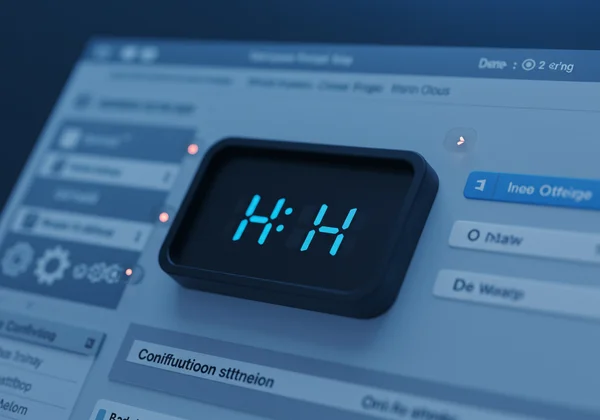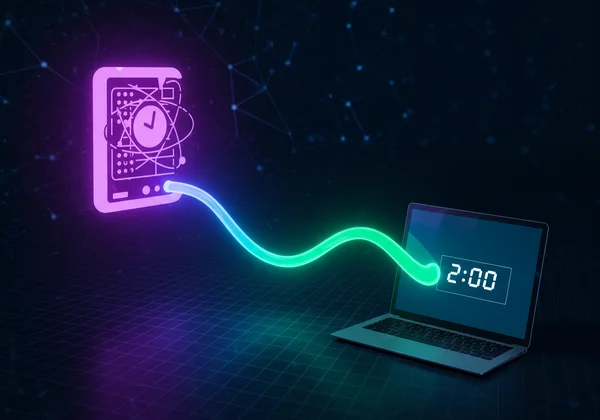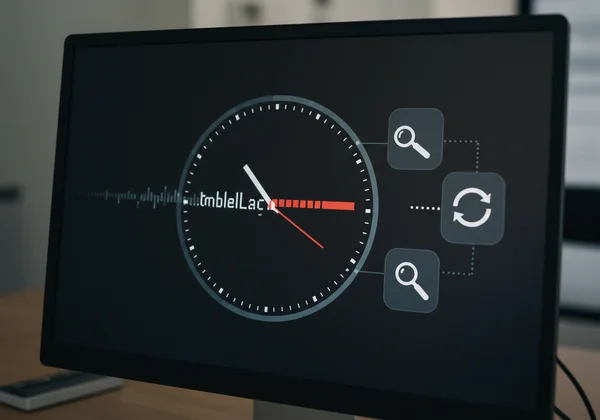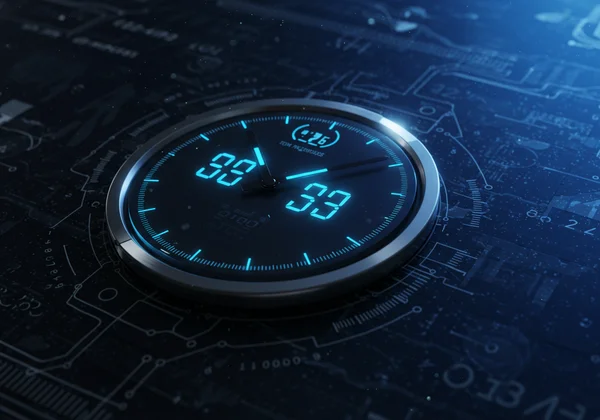Optimize Your Online Digital Clock Performance: Browser & Connectivity Tips
In a world where every second counts, the reliability of your timekeeping tools is non-negotiable. An online clock performance that is anything less than perfect can disrupt meetings, affect deadlines, and undermine precision work. Many users wonder, how accurate is an online digital clock? The truth is, its precision is deeply connected to the environment in which it operates. A high-quality online digital clock is designed for atomic-level accuracy, but your browser and internet connection are the final gatekeepers to that precision.
This guide provides expert tips to eliminate lag, prevent freezes, and ensure your digital clock experience is as smooth and reliable as possible. We will explore simple yet powerful optimizations for your browser and network settings, transforming your online clock into a truly dependable instrument. By understanding these factors, you can unlock the full potential of your timekeeping tool and experience peak precision today.
Optimizing Browser Settings for Enhanced Online Digital Clock Performance
Your web browser is the engine that runs your online digital clock. Its configuration can either create a seamless experience or introduce subtle delays and glitches. Ensuring your browser is properly set up is the first step toward flawless timekeeping and is essential for optimal performance.

Why Browser Configurations Impact Accurate Time Display
An accurate time display is not just about loading a webpage; it's a dynamic process. Tools like our online clock use JavaScript to continuously update the time, often syncing with a server every few seconds. If your browser's resources are strained by too many tabs, outdated software, or restrictive settings, it can delay these updates. This can cause the clock to stutter, skip seconds, or fall slightly out of sync, defeating the purpose of an atomic clock. Properly configured browser settings ensure that resources are allocated efficiently for a smooth, uninterrupted realtime clock.
Essential Browser Features for Flawless Operation
To ensure your flawless operation of our tool, a few key browser settings are crucial. First and foremost, always use the latest version of your browser (like Chrome, Firefox, Safari, or Edge). Updates frequently include performance improvements and bug fixes that directly benefit web applications. Second, ensure that JavaScript is enabled for our tool, as it is the core technology that powers the clock's real-time updates and customization features. Finally, avoid putting the clock's tab to "sleep" using energy-saver modes, as this can halt the time-syncing process.
Managing Extensions & Ad Blockers to Prevent Clock Interference
Browser extensions are powerful, but they can also be a source of clock interference. Some ad blockers or privacy extensions may mistakenly block the scripts required for the clock to fetch the correct time or update its display. This can lead to the clock freezing or showing an incorrect time. To prevent this, consider adding DigitalClock to the "allowlist" or "whitelist" in your extension settings. This simple action ensures our tool can function as intended without compromising your security. You can check our tool to see if your settings are correct.
Ensuring Stable Internet Connectivity for Realtime Clock Accuracy
While your browser is the engine, your internet connection is the fuel. For an online clock to achieve realtime clock accuracy, it must maintain a stable, low-latency connection to an external time server. Any disruption in this connection can compromise the precision you rely on.

The Crucial Role of Connection Stability in Atomic Time Sync
Our online clock's hallmark is its atomic time sync capability. This process involves your browser sending a request to a Network Time Protocol (NTP) server—a server synchronized with an atomic clock—and receiving the precise time back. Unstable connections with high packet loss or jitter can delay or corrupt this data exchange. This leads to discrepancies between the server's time and the time displayed on your screen. A stable connection is the bridge that ensures the atomic clock's accuracy is faithfully delivered to your display.
Diagnosing Common Internet Issues Affecting Your Online Clock
If you suspect connectivity issues are affecting your clock's performance, you can perform a few simple troubleshoot internet issues diagnostics. Start by running a speed test to check your download/upload speeds and, more importantly, your "ping" or latency. A high ping (e.g., over 100ms) means there's a significant delay in communication with servers. For a more stable connection, try switching from Wi-Fi to a wired Ethernet connection or moving your device closer to your router. A simple router restart can also often resolve temporary network glitches that affect a world time zone clock.
Minimizing Latency for the Most Accurate Online Clock Display
Latency is the delay it takes for data to travel from your device to the server and back. To get the most accurate online clock display, this delay must be minimized. Closing background applications that consume significant bandwidth, such as streaming services or large downloads, can help reduce latency. For professionals who require absolute precision, a wired connection is always superior to Wi-Fi. By taking these steps, you ensure that the time you see is a true reflection of the atomic standard, right down to the second. View the clock now and see the difference a stable connection makes.
Digital Clock Troubleshooting: Common Problems & Quick Fixes
Even with optimal settings, you might occasionally encounter a hiccup. Our digital clock troubleshooting guide covers the most common issues and provides simple, effective solutions to get your clock running smoothly again. Most problems can be resolved in just a few clicks.

What to Do When Your Online Clock is Lagging or Freezing
If your clock display is experiencing lag issues or appears frozen, the first step is a "hard refresh." Pressing Ctrl + F5 (or Cmd + Shift + R on Mac) forces your browser to reload the page and clear its cached version, which may be corrupted. If that doesn't work, try clearing your browser's cache and cookies specifically for our site. Often, old data stored in the browser can conflict with the latest version of the tool. Closing other resource-heavy tabs and applications can also free up system memory and processing power for the clock.
Resolving Display and Customization Issues with Your Online Clock
Sometimes, you might encounter visual bugs, such as custom colors or fonts not saving correctly. This is almost always related to browser caching or a conflicting extension. After applying a setting, perform a hard refresh to ensure the new configuration loads properly. If the issue persists, try temporarily disabling your browser extensions one by one to identify the culprit. Testing the fullscreen digital clock mode can also help determine if the problem is isolated to the standard view. You can customize your clock with confidence once these minor issues are resolved.
When to Seek Further Assistance for Your Online Time Tool
We've designed our online clock to be incredibly reliable, but if you've tried all the troubleshooting steps above and are still facing issues, it might be time for tech support clock guidance. Before reaching out, try accessing the clock from a different browser or device. If the problem disappears, the issue is localized to your original setup. If the problem persists across all devices, it may indicate a wider service issue, though this is extremely rare. Your detailed feedback helps us continue to improve the most trusted free online clock available.
Master Your Time: Steps to Peak Online Clock Performance

To truly benefit from an accurate online clock, it's vital to pair our advanced technology with an optimized browsing setup. By ensuring your browser is up-to-date, managing extensions wisely, and maintaining a stable internet connection, you unlock the full potential of DigitalClock. These simple steps ensure every second is displayed with the atomic accuracy you expect and deserve.
We know your time is precious, and you deserve a timekeeping tool that's as flawless as you are. Put these tips into practice and discover the noticeable difference. Head over to our homepage to use our highly accurate and customizable clock for your work, study, or personal needs.
Ready to experience unparalleled precision? Take control of your time today.
Frequently Asked Questions About Online Clock Performance
How accurate is an online digital clock?
Our online clock is designed to be exceptionally accurate. It syncs with global atomic time servers via NTP (Network Time Protocol), which is the standard for synchronizing time on the internet. However, its perceived accuracy on your screen depends on a low-latency internet connection and an optimized browser, as discussed in this guide.
Does this online clock work offline, or does it require an internet connection?
Our online clock requires an active internet connection to function correctly. The initial load of the clock and, more importantly, the continuous synchronization with atomic time servers depend on connectivity. Without it, the clock cannot guarantee its high level of precision.
How does this digital clock sync with atomic time for its high precision?
Our system uses the Network Time Protocol (NTP) to request the current Coordinated Universal Time (UTC) from a network of highly precise time servers. These servers are directly synchronized with atomic clocks. The tool then adjusts for the round-trip latency of your internet connection to display the most accurate time possible on your device.
Can browser extensions or ad blockers affect my digital clock experience?
Yes, absolutely. Some browser extensions, particularly ad blockers, script blockers, or even certain privacy-focused add-ons, can interfere with the JavaScript that our clock uses to update the time and save your custom settings. We recommend adding DigitalClock to your extension's allowlist for the best experience.
What are the minimum browser requirements to run this online clock smoothly?
For optimal performance and access to all features like our switchable clock display, we recommend using the latest stable version of any major modern browser, such as Google Chrome, Mozilla Firefox, Apple Safari, or Microsoft Edge. Using an outdated browser may result in performance issues or visual glitches. Feel free to try our free tool to test it on your current browser.